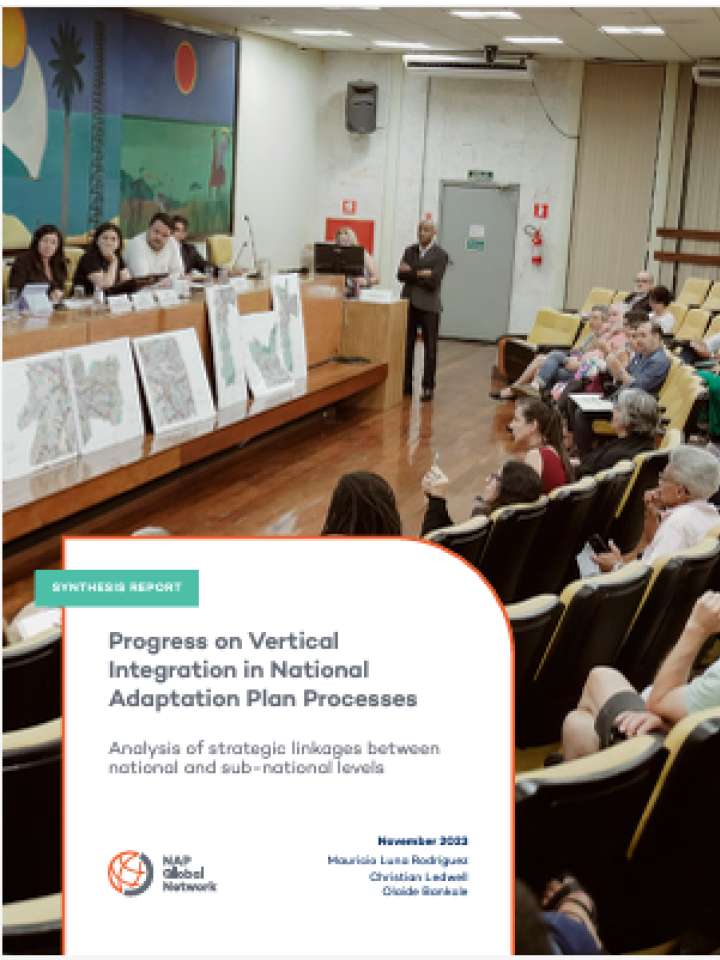Progress on vertical integration in National Adaptation Plan processes: Analysis of strategic linkages between national and sub-national levels
This synthesis report presents an analysis of how countries are advancing vertical integration in NAP processes. Vertical integration for climate change adaptation is the process of creating intentional and strategic linkages between national and sub-national governance levels in the planning, implementation, and monitoring, evaluation, and learning (MEL).
From the analysis, this report presents the following key findings regarding vertical integration:
1. All NAPs reference one or more non-governmental sub-national actor that is relevant for vertical integration in the NAP process. They reference a broad range of non-governmental actors, such as civil society organizations, small-business owners, local communities, and smallholder producers, as well as specific societal groups, such as women, Indigenous Peoples, youth, and people living with disabilities, as actors that are relevant in the NAP process.
2. Most countries include a role for sub-national governments in climate change adaptation. NAP documents assigned different roles to sub-national authorities during the planning and implementation steps of adaptation and, to a lesser extent, in the MEL stages of the NAP process.
3. Most NAPs mention coordination mechanisms across various levels of governance. Countries are establishing diverse modes of coordination across levels. For example, some countries are using existing multilevel governance structures, some are creating new multi-scale coordination mechanisms, and others are initiating ad hoc processes, typically for consultation during the development of the NAP.
Explore further

